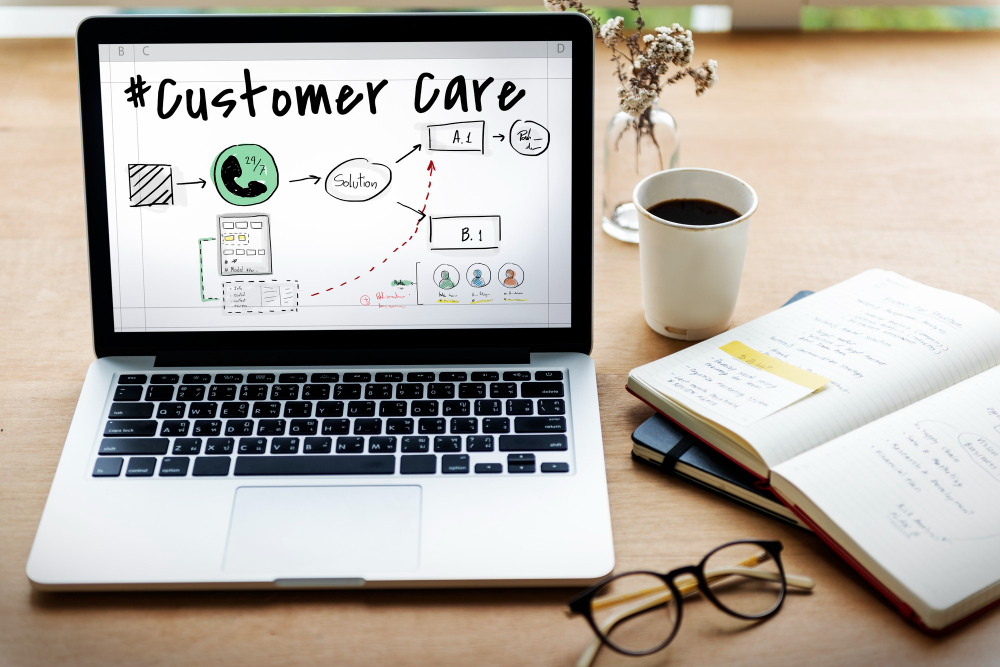All good business owners keep a close eye on their customer statistics and metrics. After all, your customers are the reason you’re in existence in the first place.
So it’s crucial that you keep your finger on the pulse of customer activity and that you make appropriate adjustments and arrangements to match that activity. One often-overlooked metric is customer lifetime value. Sure, you care about your customer base.
You work hard to promote your brand and draw more customers to you. And once you’ve captured a client’s interest, you’re dedicated to providing the best product, service, or experience possible for them.
There’s no doubt that you commit a large portion of time and energy to customer satisfaction. But customer lifetime value extends far beyond just that.
What Is Customer Lifetime Value?
Customer lifetime value (sometimes abbreviated as CLTV) is the amount of money a particular customer spends during the length of time they’re doing business with you. Simply put, it’s the amount of revenue you can expect from a given customer during their relationship with your company.

Naturally, a higher customer lifetime value rate indicates satisfaction and brand loyalty. It also suggests a greater chance of the client becoming a repeat customer and also recommending your services to others.
The higher this number is, the greater the likelihood that you’re not only making the customers happy, but you’re keeping them happy. And isn’t that every business owner’s goal? (Hint: if it isn’t, you have some serious reevaluating to do).
On the other hand, a low rate of CLTV could indicate customer dissatisfaction and room for big improvement. It might also imply that your current audience doesn’t provide sustainable revenue or possess the potential for a long-term business relationship.
Perhaps this means that your customers are more “one-and-done” clients vs. lifetime customers. It could also mean that customers found your product or service lacking in some way and chose to take their business elsewhere. Either way, this will require you to reframe your marketing strategy to boost the longevity of customer experiences.
As mentioned above, many business owners neglect the importance of customer lifetime value. With so much energy and money poured into customer acquisition, little room is left to consider the length of a customer’s stay with the company.
Naturally, customer acquisition is a crucial factor in your brand’s success, but it’s not the only piece of the puzzle. Once you’ve earned a customer’s business, you should work just as hard at maintaining their satisfaction and respect as you did at obtaining their business in the first place.
And the good news for you is that CLTV rates will cost your business significantly less money than customer acquisition. Customer acquisition (CAC) can be up to five times more expensive than CLTV. In other words, it costs your business much less money to keep existing customers happy than it does to acquire new ones.
Of course, you should still devote a good portion of your budget to marketing and advertising to keep new customers rolling in. But you absolutely cannot forget to factor CLTV into your business budget.
How Do You Calculate Customer Lifetime Value?

Now that you recognize the importance of CLTV to your brand’s survival, you’ve got to learn how to calculate it. And guess what? We’ve got even more good news for you: there are some free calculators available to assist you in this very process.
This customer lifetime value calculator from Semify LLC, a Rochester, NY-based marketing agency, does the legwork for you. It provides everything you need to determine your brand’s customer lifetime value rate. All you need to do is plug in your customer churn percentage rate, your average customer’s lifespan (in months), the median customer invoice, the average number of new customers you acquire per month, as well as any marketing and sales expenses.
All of these metrics are statistics that you should be closely tracking and recording anyways, so this should be a simple calculation.
Once you’ve determined your CLTV, you can compare that to your customer acquisition cost as well as your business’s overhead expenses and profit margins. This will help you examine which areas you’re excelling in and which areas need work.
Where To Go From Here?
So, how does your customer lifetime value rate look at this time? Are you satisfied with it, or does the number make you wince a little? No worries, there are plenty of strategies you can implement to boost customer lifetime rates.

In fact, you likely exercise many of these techniques already. You’ll just need to do a little honing and refining. Exemplary customer service is the tried-and-true path to good rates of customer lifetime value.
Keeping your customers happy and wow-ing them with a great experience should be your top priority as a business owner. Needless to say, there are many ways to deliver an impressive customer experience, and the methods you choose will depend on your specific industry and the type of services you provide.
Giving your customers consistent, ongoing support, honoring their wishes, and making an above-and-beyond effort that exceeds your competitors are all keys to success in the customer satisfaction department.
This also means being open to feedback from your valued customers. The old adage “the customer is always right” may get tossed around too frequently these days, but it’s the ultimate not-so-secret secret to your business’s survival. What your customers think and feel about your product matters even more than what you think about your product.
While it’s important to take pride in your offerings, it’s the customers who purchase that product who keep your business running at. Keeping those customers happy means listening to what they have to say. Use surveys or online feedback forms to capture and examine customer satisfaction. Allow room for clients to be specific and provide details about what they like and dislike, what they’ve been provided, and what may be lacking—the more particular the feedback, the better your ability to deliver exceptional customer service.
You’ll also need to incorporate remarketing techniques into your existing marketing strategy. This means increasing the amount of time a client spends with you and allowing them opportunities to return and do more business even after their initial services have been rendered.
There are many ways you can do this. It just might require some creativity on your part. You can roll out email blasts and offer special promotions or campaigns to keep your brand’s name at the forefront of your customer’s minds.
Stay Relevant in Your Customers’ Minds
You want to retain customer engagement, even long after you’ve helped the client reach their goals with your company. Stay on their radar and stay relevant in their minds with frequent (but not too excessive) check-ins and reminders.

This helps customers remember that your company exists and what a positive experience they had doing business with you. It also serves as a gentle nudge that your company is still providing services, and if this client knows anyone who could benefit from such services, they should send them your way.
All of this can make a big difference in your customer lifetime value numbers. And this is exactly what will keep your business booming, growing, and reaching new heights.


